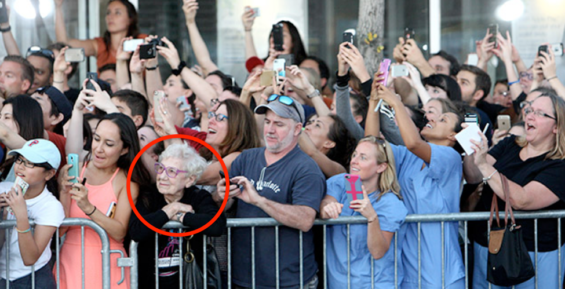Analysts at leading firms agree that customer experience is the new battleground to differentiate and compete. After all, a “delightful” and frictionless customer experience yields increased customer satisfaction, loyalty, advocacy and customer lifetime value.
One of the biggest CX trends in financial organizations around the world is digital transformation, which represents the investment in upgraded technologies, processes and infrastructure to compete for a new generation of connected customers. This sets the stage for a more agile organization, one that is more capable of introducing and supporting new services in retail and online.
But agility and technology is just the beginning. In my research over the years, I find that while companies are ready to take on the challenge of digital transformation and customer experience, it is done so through a lens of legacy rather than with an updated vision of what’s possible.
Before banks, credit unions or any financial organization can compete through customer experience, executives and technologists should take some steps back and start at the beginning. Two questions every decision-make must answer are, “what is customer experience?” and “how are customer expectations and values evolving?” Even though these questions seem commonsensical, I can assure you they are exactly the right place to start.
So, what is customer experience?
It is one of those things that seem to carry as many different answers as there are people you ask. But, its role in the future of banking lies in the simplicity of a definition that in of itself is customer-centered.
The core of customer experience is the sum of all engagements a customer has with your company in each touch point, in every key moment of the customer journey, throughout the customer lifecycle. It’s not just about how well you do in one moment, it’s every moment that counts. If you have fantastic retail services, but an outdated website, complex app, or aging call center engagement, your customer experience is the average of those things and everything else.
Customer experience, or better said, the experience customers actually experience, is shaped through totality and thus requires thoughtful design in whole and in each part.
Meet Your New Customer Segment – Generation C (Connected)
Even though you think you’re already customer-centric, you may not be. I believe you believe you are. But customer-centricty is measured in action and inaction. Many companies I’ve learned are customer-centric in principle but not in practice. Truth is, that most of the time, decisions are made in favor of shareholder or stakeholder value over what’s in the best interest of customers.
Several years ago, I published a series of reports and books introducing what I called the “Dynamic Customer Journey,” and it was meant to outline in detail how connected customers traveled through the customer journey. It redrew the traditional funnel and highlighted the emergence of new touch points ranging from social to mobile to video to peer-to-peer reviews. More so, it introduced “Generation-C,” a growing influential customer segment that shared similar behaviors, interests and aspirations unlike previously documented demographics.
The “C” represents connectedness and everything about how they make decisions, where and why is highly evolved and evolving. This is a critical distinction in consumerism in that those who live active digital lifestyles shared similarities in customer journeys across all age groups. Rather than just looking at Millennials versus Boomers or Gen X vs. Centennials, Generation-C is inclusive of multiple demographics and warrants a digital (and mobile) first approach to CX and the design of products, services and all experiences.
By studying traditional customers and Generation-C, banks, credit unions and financial companies can uncover new insights and inspiration to build relevance and market share in this and the next economy.

Navigating the Role of AI in Financial Institutions
83% of FI leaders agree investing in AI is essential for 2024 but how you leverage AI is instrumental in success and meeting customer expectations.
Read More about Navigating the Role of AI in Financial Institutions

Industry Cloud for Banking from PwC
PwC’s Industry Cloud for Banking applies our deep industry knowledge to your specific business needs
Shifting Perspective to Rethink Product and Service Design
Customer experience takes an outside-in perspective. While it sounds commonsensical, it is rare in practice. Financial companies (and a majority of veteran businesses for that matter) are not representatives or champions of evolving customer segments.
They operate through a complex organizational culture that makes it impossible to see people clearly. Yet, executives often think they are their customer. There’s a litmus test for it though, albeit one that is hardly scientific. It’s meant to evoke a smile but also to get you thinking.
In the picture below, what do you see?
While you may see a crowd of people enjoying a captivating moment, you also see the very thing that prevents companies from designing products, services and experiences that matter to connected customers.
Executives see and relate to the lovely woman in the front. She’s not unlike a common customer persona most businesses cater to. But, for the moment, take her age, gender, education, or any demographic for that matter, out of the equation. Let’s just think about it as “the customers we’ve known for a long time.”
Any time you design new things or consider new technologies, this group is at the center of your strategy. They represent our center of reference and as such, we look at everything else as fringe behavior, hot trends, or something that will pass. This leads to a few different types of experience design approaches, some of which…
- Iterate on existing services to deliver the same old thing but maybe better
- Capitalize on a tech trend to try to “be hip” and emphasize tech over value or usability
- Repackage existing products and incentivize them with new gimmicks
Either way, we may miss what’s really going on in the picture. Some of us see the people on their phones prioritizing tech over the moment. Others see that they are not only in the moment, but they’re able to straddle digital and physical worlds to share the moment with others in real-time thus making the moment bigger than just to those present.
Everyone in this picture is in the moment. The question is, can you design experiences that cater to traditional customers and the evolving expectations of your connected customers? Hint: you can and you can’t. But understanding what you know and don’t know is exactly how you win.
Innovation Takes Design for Connected Generations
”All banks must prioritize UX, design thinking and experience architecture to compete for the future right now. This is a trend that’s only going to advance.”
— Brian Solis
It is how customers, for all their differences and similarities, feel about your bank and its ethos as tied to their objectives, values and how they correlate to other great/negative experiences they have in other facets of their life.
That means in addition to building an agile infrastructure, banks must also consider the relationship customers have with technology and how that changes their standards for service, engagement and experience. More so, executives and technologists must also understand people, what they value, expect, what makes them happy, and why.
Otherwise, new technology is at best, novelty and at worst, an inconvenience. The same plays out with products and services and also every touch point from online to in store.
Let’s start with a simple question, “What is a bank today vs. what a bank should look like if invented today?”
What a bank means to you and me is very different than those who live digital lifestyles. They use mobile devices as their first or only “PC” and live on services such as Uber, Lyft, Postmates, Airbnb, TaskRabbit, FIlld, et al. Their standards for engagement, utility and value are different.
The standard for traditional customers might mean personal service, representative engagement to navigate complex products and processes such as loans, wealth building or retirement programs, having a retail location to conduct manual transactions, etc. On the other side of the equation, Generation-C might manage money with different intents and goals. How they engage with information or transactions emulates the user interfaces and experiences of their favorite networking and messaging apps such as Tinder, Instagram, Kik, Snapchat and the like.
I know, you’re thinking “what do those services have to do with my financial institution?” At a cursory level, the answer is “not much.” But when it comes to user experience, the answer shifts to “everything.”
The design cues inherent in each of these apps caters to a connected mindset, making interaction frictionless if not invisible and hyper-transactional. And, these apps seamlessly bridge offline and online interaction.
Then there’s the emerging trend of “no UI is the next UI,” setting the state for voice commands, AI and a new foray of engagement opportunities that further shift customer standards and expectations. The point is, these apps become your competitors and also sources of inspiration to innovate.

Experience is a Gift Worth Giving … and Getting
In October 2014, Capital One acquired Adaptive Path, a highly regarded UX consultancy based in San Francisco. At the time, the UX and financial industries were perplexed as to the rationale for the acquisition. But now it’s clear, Capital One had the foresight to integrate tech and design thinking into its products and services.
All banks must prioritize UX, design thinking and experience architecture to compete for the future right now. This is a trend that’s only going to advance.
For example, last year, the “hottest app in Canada” in mid-2016 was an app from a traditional bank, TD Canada Trust. The app, MySpend (created in conjunction with Moven), cracked the App Store’s top 10 charts, by blending utility and everyday necessity.
Furthermore, the app was designed specifically for mobile devices and behavior, taking an outside-in approach rather than simply attempting to mobilize desktop or retail-based products and services. What’s also unique here is that TD Canada Trust emphasized a similar approach to Capital One, seeking the development expertise from the startup community rather than from within. While the app is popular, one MySpend user quipped, “Great app, lousy bank” followed by a frustrated emoticon.
Design and tech can only go so far as the products, services, processes, systems, operations, et al. are designed to support. This is why customer experience, design, innovation and leadership must work in lock-step to fuse the connection between usefulness, user experience, value and enchantment.
Customer-centricity or obsession or whatever you want to call it, is just one step. Change gains momentum with a new mindset that sees customers, markets and opportunities through a lens of possibility and invention not legacy perspectives.
As a regulated risk-averse industry, financial institutions can find every reason to make safe bets. But at best, that leads to what I refer to as iteration, doing the same things better. That might work for your traditional customers, but Generation-C demands innovation, products and services that unlock new value. Disruption either happens to you or because of you, and that’s measured by how many innovative and iterative experiences make the old ones obsolete.









